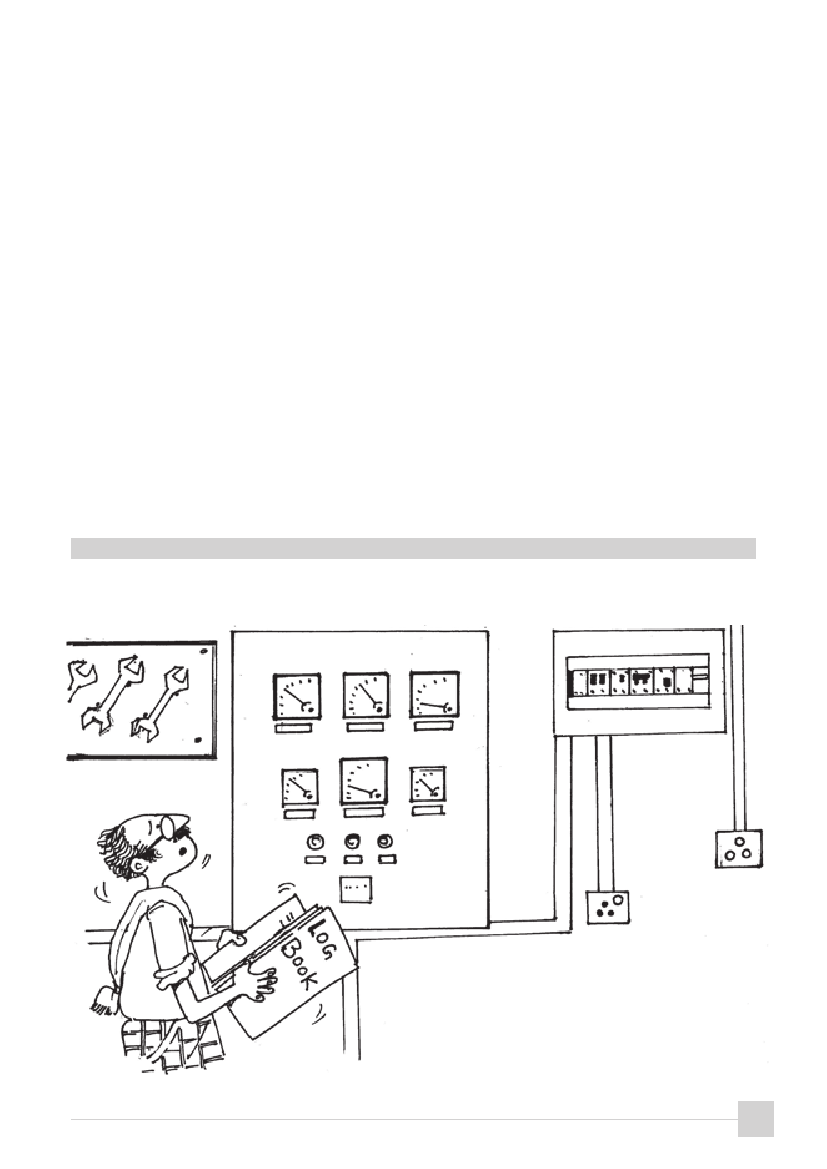
i. Generator
There are many types of generators available in the market. For community based micro-hydro
electrifications schemes, the induction motors and synchronous generators are bought from the markets.
Although the synchronous generators can be bought off-the-shelf, induction generators are hardly
available. The induction motors are internally modified by introducing some capacitors.
j. Control panel
Generally, micro-hydro power schemes generate constant power. This can vary when the water entering
the jets is regulated by operating the valve, but often, the rate at which water is supplied is not changed.
The demand for (and use of) electricity by the communities fluctuates all the time. In order to keep the
overall system stable, (say 230 V and 50 Hz), a control panel is introduced. In cases where the demand
for electricity by the communities is less than the electricity produced, the excess electricity would be
channelled to the ballast, which would burn it out. That ballast may be made out of electrical heaters,
bulbs or any other electricity consuming element. When demand for electricity exceeds that which is
generated, then the controller cannot maintain the system at 230 V / 50 Hz and the generator cannot
supply to that demand.
The generator then slows down and decreases the above values (230 V / 50 Hz). If it drops severely it
can be harmful to the generator and appliances. Therefore, the control panel would cut off the electricity
supply to the community. These panels may be supported with several display indicators or meters.
Control Panel
23